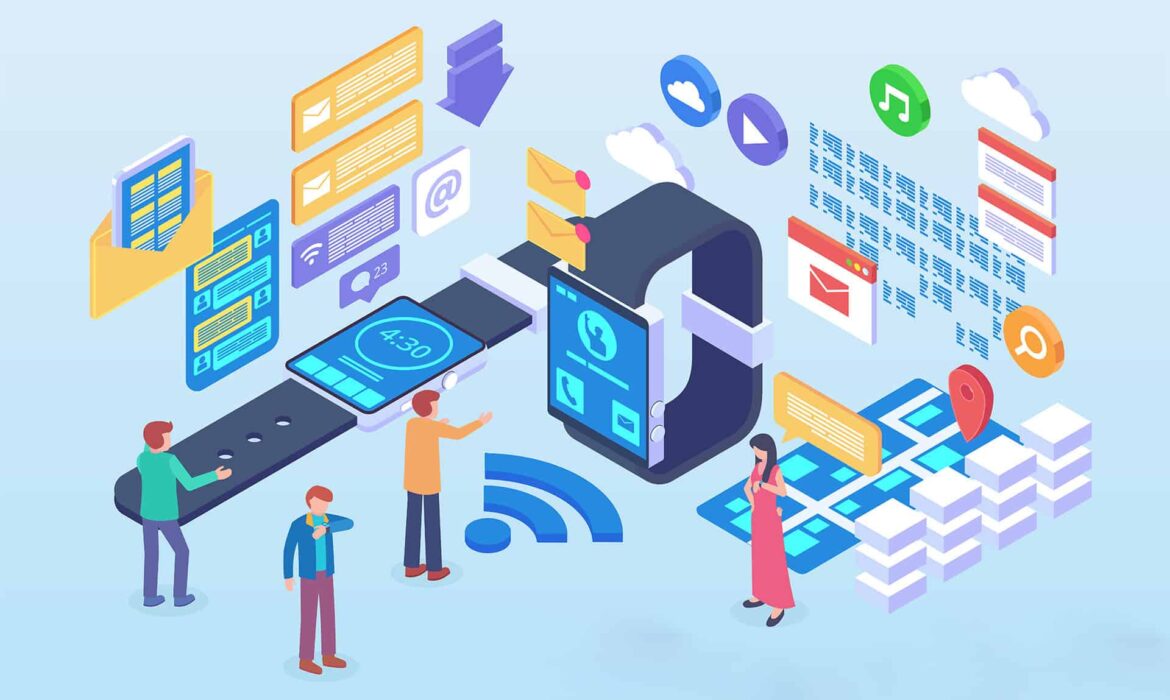
The entire business world is going through a digital transformation in recent times. Digital transformation (DX) is about making a cultural shift towards smart and agile business practices wherein all digital technologies are integrated to improve current processes and create efficient processes that can deliver more value to customers. Analyst firm Statista reports that company investments for digital transformation between 2020 and 2024 would be $7.8 trillion
The covid-19 pandemic that changed the world upside down accelerated this process. McKinsey reports that covid-19 has accelerated digital transformation by an average of 7 years. As organizations are forced into a work-from-home model, they are challenged to create different apps to deliver digital solutions and digitally manage business operations. However, IT professionals are not ready to take up this burden and several IT projects are waiting in the pipeline. The dearth of skilled professionals adds up to this challenge. As such, business teams are compromising with spreadsheets and basic databases to manage day-to-day activities.
Another concern for organizations is shrinking IT budgets. In the year 2019, organisations spent $477 billion on IT projects. Owing to the pandemic, organizations’ IT budgets dropped down to $466 billion. However, the work-from-home setup required companies to ramp up their IT budgets to $572 billion in 2022, as reported by Statista. As such, more and more organizations are moving towards citizen development, an enterprise practice wherein business teams who don’t have proper IT training creates, deploys and manages applications using low-code/no-code platforms, complying with IT governing policies.
Citizen development offers significant benefits for organizations. Firstly, it enables organizations to create and deliver solutions that offer more value to customers as these solutions will be developed by people that closely work in that area. They are well versed with the pain-points, customer requirements and behavioural trends. It also helps organizations to quickly adapt to changing business needs, bringing agility and speed into operations while significantly improving transparency. Secondly, it allows them to fill the gap caused by the lack of skilled IT professionals. Thirdly, it removes the pressure on IT experts, allowing them to focus more on mission-critical projects. It significantly increases productivity as well. All this is made possible by low-code/no-code app development platforms.
What is Low code App Development / No code App Development?
Low-code or No-code app development is a method of creating code using a visual application development environment wherein users can drag n drop components and connect them to build applications of all types. It eliminates the need to write thousands of lines of code or deal with complex code logic. People with little to zero software knowledge can simply create and deliver quality software applications within a quick time. It makes coding as simple as creating a PowerPoint presentation or publishing a blog using WordPress.
In a traditional software development environment, developers write thousands of lines of code involving complex logic to add features and functionalities to an application. These developers are certified IT professionals and possess good knowledge of programming languages, database software, testing protocols etc. When it comes to the low-code/no-code app development environment, this entire technical process happens in the background, thanks to low-code/no-code platforms. At the front end, non-IT professionals simply drag and drop tools and connect them to add functionality and features, similar to creating flowcharts. You can test, experiment and seamlessly deploy apps using these platforms.
While the terms ‘low-code’ and ‘no-code’ are interchangeably used, they differ in their functionality and purpose. For instance, low-code application development requires users to have minimal knowledge of the coding environment. Experienced developers use these platforms to quickly build applications with minimal features while non-developers with basic coding knowledge can use these platforms to build required apps. They can also use these apps for business-critical processes but require in-house developers to finalize the backend code.
No-code platforms are for users who have zero coding knowledge. Using the visual coding environment, users can simply create basic apps. At the next level, developers add advanced features or functionalities to these apps, if required. No-code platforms are normally used to create apps within a specific vertical/industry or a specific department within the organization. While low code apps best suit standalone apps that require further integrations with multiple data sources, no-code apps best suit front end use-cases.
Mendix is the most popular enterprise-level low-code app development platform. Appian and Bonsai are other leading platforms in this space.
How low-code/no-code app development is accelerating digital transformation?
Low-code/no-code app development platforms are gaining popularity in recent times, owing to the amazing benefits they offer to organizations. Firstly, they accelerate software development as non-IT professionals quickly build apps and developers enhance and extend the functionality. This will leave more time and space for experienced coders to focus on mission-critical processes and deliver quality products faster.
Secondly, these apps deliver more value to customers as they are coming from professionals who are closely associated with that environment. For instance, a sales guy on the drive knows the pain points, customer behaviour and requirements while pitching a sale. So, he can quickly replace his traditional tools such as spreadsheets, customer contact lists, notes, to-do lists, customer profile checks etc. with advanced applications incorporating the right features into it. While it makes his job easy, it offers the required support for customers. As such, the sales guy can quickly close a sale while delivering an enhanced customer experience.
No-code app development enables organizations to optimize costs by distributing development tasks across teams. While speed is realized, costs are reduced. With in-built cross-platform support, security and data integration, building apps becomes simple and easy while deployment is just a click of a button. Apps built on no-code platforms are easily changeable as well.
Low-code/no-code apps come with certain challenges. Firstly, as non-IT professionals work on various apps, management lacks central visibility into what’s developing in the organizations. The management needs to check how data is being extracted into these apps and how it is being exposed to everyone. Secondly, you don’t own the source code and might run into vendor lock-in. Thirdly, non-IT professionals mostly experiment with the apps resulting in resource wastage and technical debt. Scaling these apps is another concern. Rigid templates might limit your creativity at times.
Fourthly, there is a learning curve as you need to take time to check out how tools work on the platform. For instance, working with nested loops is not easy. Moreover, community support and resource availability are not adequate. Finally, it requires a culture change in the organization as the software development environment goes through a paradigm shift.
Low-code / No-code App development is here to stay
Today, organizations are aggressively embracing Low-code and no-code app development. The pandemic that puts pressure to deliver digital solutions is a key driver of this trend. Another important reason is that most organizations lack the IT budgets and expertise to build a variety of apps and these platforms provide a levelled ground to compete with enterprise companies.
MarketsandMarkets reports that the low code application development market earned a revenue of $13.2 billion in 2020. This value is expected to touch $45.5 billion by 2025, growing at a CAGR of 28.1% between 2020 and 2025.
Gartner predicts that the market revenues of global low code development technologies will grow 22.6% from 2020 to reach $13.8 billion in 2021.
ResearchandMarkets reports that the low-code market earned a revenue of $10.3 billion in 2019. This value is expected to reach $187.0 billion by 2030, growing at a CAGR of 31.1% during 2020-2030.
Looking at these numbers make it evident that low-code/no-code app development is here to stay. Organizations that quickly embrace this trend are sure to stay ahead of the competition.






